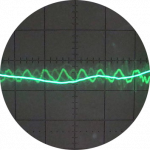Air source heat pump problems - NIBE F 2040 ASHP
Hello all ... would really appreciate some thoughts and advice. We had our home renovated last year (early Edwardian, about 2000 sq ft, 3 floors, only top floor has insulation) and the gas boiler was replaced with a NIBE F 2040 ASHP. The installer, who fell out with the builders, has been hard to contact/rely on, but we got him round before Christmas because we were freezing - the system couldn't adequately heat the house and everybody was getting sick. The installer added an additional pump and mixer to increase the temperature in the radiators and the house has been warmer, although the ASHP can't meet the temperature set on the thermostat when the outside temperature is below freezing.
Our electricity usage seems extraordinarily high - more than 80 kWh / day when the outside temp is below freezing and our energy supplier wants to put us on a *massive* monthly direct debit. I called in another technician (original installer doesn't respond to messages), he's changed some settings on the 'curve panel', but has not made a huge difference to electricity usage.
Main questions are, how much electricity should a ASHP be using in a house like this? Should we be doing something different with the ASHP? Is comprehensive house insulation the solution to our problems? How difficult is it to find a reputable insulation firm? (An industry person told me that they have far more work than they can take on).
sincere thanks in advance for any thoughts, John.
Hi - it is hard to be definitive. The house type is key and how much insulation too. We have a Samsung Joule 16 kWh ASHP in a large eco house. During these freezing temps we are using up to 80 kWh/day to keep the house warm and heat the water. We heat the house to 22c in the main rooms and 20c in the bedrooms, which is on the high side. We also heat the water to 52c. So we are pushing it. I know the efficiency of ASHPs can fall off a cliff the more load it is under.
I would say that your consumption isn’t off the scale but any insulation/draught proofing you can do the better.
Posted by: @johnsHello all ... would really appreciate some thoughts and advice. We had our home renovated last year (early Edwardian, about 2000 sq ft, 3 floors, only top floor has insulation) and the gas boiler was replaced with a NIBE F 2040 ASHP. The installer, who fell out with the builders, has been hard to contact/rely on, but we got him round before Christmas because we were freezing - the system couldn't adequately heat the house and everybody was getting sick. The installer added an additional pump and mixer to increase the temperature in the radiators and the house has been warmer, although the ASHP can't meet the temperature set on the thermostat when the outside temperature is below freezing.
Our electricity usage seems extraordinarily high - more than 80 kWh / day when the outside temp is below freezing and our energy supplier wants to put us on a *massive* monthly direct debit. I called in another technician (original installer doesn't respond to messages), he's changed some settings on the 'curve panel', but has not made a huge difference to electricity usage.
Main questions are, how much electricity should a ASHP be using in a house like this? Should we be doing something different with the ASHP? Is comprehensive house insulation the solution to our problems? How difficult is it to find a reputable insulation firm? (An industry person told me that they have far more work than they can take on).
sincere thanks in advance for any thoughts, John.
Hi John, welcome and sorry to hear of your problems. Some more information will help you get the best advice:
- Was a heat calculation done as part of the system design? You should have heat losses for each room and an assessment of the radiator size and type needed to heat it
- What rating ASHP is your Nibe?
-what flow temperatures are you running the system at currently? Is it using a fixed flow or weather compensation?
If your ASHP can't heat the house when it's cold then the ASHP itself, or the radiators, could be too small. But that's not possible to confirm without the above information. It could be something else you can fix by changing settings.
ASHP running costs can go up massively when the average daily temperature drops near freezing, defrost cycles start kicking in, and the house heating load is high. We get maybe 4-6 weeks a year like that typically. ASHPs can't throw huge amounts of heat quickly inside the heated space, but if operated properly they don't need to do that. Insulate the house to the greatest extent possible. Whatever energy source your heating system runs off, a poorly insulated house is heating the street. Have you had a recent EPC survey or an energy assessor in to look at the property? EPCs can be a bit wide of the mark, with some strange recommendations, but that would be a good place to start. Edwardian is probably solid wall (?) - internal insulated dry lining? They may be internal architectural features you don't want to compromise or lose, so it can be challenging.
Posted by: @rickk54I know the efficiency of ASHPs can fall off a cliff the more load it is under.
While I am new to heat pumps (just installed 16kW Samsung Gen6) - what I have learnt is that the carnot equation only has 2 parameters (Temp outside ambient, and Temp flow). Efficiency cannot directly be about anything else. (of course it is more complicated than this .... but bear with me)
So efficiency is about flow temp (which you may be able to control depending on your situation) and ambient temperature (the bit you likely can't control with an ASHP). There is a lot of experience and knowledge needed to design/tweak a system to operate with as low a flow temperature as possible and that is the journey I am on, learning from others on this site and elsewhere. This journey made more difficult by the fact the plumbing components you need to have an optimal system are not easy to source, it seems.
Below is the expected COP for flow and ambient of a good modern heat pump, taken from site below.
@william1066 thanks for your feedback. I don't have enough knowledge about ASHPs to fully take this in - at this stage - but I can see that incorrect settings may be part of our problem. thanks again, John
-
Is this ASHP install OK?
5 months ago
-
Help needed in Essex
8 months ago
-
High air source heat pump running costs – Vaillant AroTherm Plus
10 months ago
-
Installations in Flats
1 year ago
-
Viessmann Vitocal 250-A in the UK
2 years ago
- 26 Forums
- 2,356 Topics
- 53.4 K Posts
- 237 Online
- 6,017 Members
Join Us!
Worth Watching
Latest Posts
-
RE: Electricity price predictions
Ben Watts posted on LinkedIn that he had updated this w...
By Judith , 3 hours ago
-

RE: The good, the bad and the not that great – my heat pump installation
Small update, Emailed and Spoke to Midea UK and they ...
By Burtis , 3 hours ago
-
RE: Solis S6-EH1P8K-L-PLUS – Why I Chose It and What I’ve Learned So Far
@bash Octopus does charge for the admin. The process al...
By Batpred , 3 hours ago
-
RE: External pipework insulation
@transparent HI all The products you mention are ver...
By David Smith , 4 hours ago
-
RE: New Fogstar 15.5kWh upright solution
Issues still under investigation by Solis... Fogstar ...
By Batpred , 4 hours ago
-
RE: Who's your electricity provider and what's your tariff?
I agree, the consumer is not being properly represented...
By Batpred , 4 hours ago
-

RE: Controlling Daikin Altherma via P1P2 and Home Assistant
@weoleyric, apologies for the delay in response. Give...
By Majordennisbloodnok , 5 hours ago
-
RE: Octopus Cosy Heat Pump Owners & Discussion Thread
@harrisonc wow. That’s going to get the rumour mill gr...
By AndrewJ , 7 hours ago
-
RE: Advice on internal circulation pump noise
Thanks @mikefl - I'll maybe have a look at the lock-shi...
By jtg , 21 hours ago
-

RE: Heat Pump Heats the House… But It’s Not Cosy. Emitter Changes or System Tweak?
@toodles interesting suggestion, thanks. I will try to...
By GrahamF , 21 hours ago
-
RE: Mitsubishi Ecodan Auto Adaption trial to stop cycling.
The interval you talk of, i think, will be 60min for an...
By F1p , 1 day ago
-
Agree with @majordennisbloodnok on the setbacks. We hav...
By ChandyKris , 2 days ago
-

RE: Speedcomfort radiator fans
@deltona the way the links were added broke the page. A...
By Mars , 2 days ago
-

RE: Setback savings - fact or fiction?
I agree! Even more so if we get an answer! But the chal...
By cathodeRay , 2 days ago
-

RE: Refrigerant R32, is it now banned in the EU from 1st Jan 2027 for monobloc ASHPs?
This has been delayed from what I believe to be this ye...
By dgclimatecontrol , 2 days ago
-
RE: Are We Sleepwalking Into Another Race to the Bottom?
this is why I provided current flow temperatures in the...
By ksim , 2 days ago
-

RE: Why Millions of UK Homes Struggle With Heat Pumps
There's many homes that would be quite a disruption for...
By dgclimatecontrol , 2 days ago
-
RE: Ecodan unable to hit legionella target temp - what's the consensus?
@rhh2348 ...maybe this option is what you want? Alter...
By benson , 2 days ago
-

RE: Free Ecoheat Heat Pump Install
@old_scientist This does make the unit smaller as the b...
By dgclimatecontrol , 2 days ago





